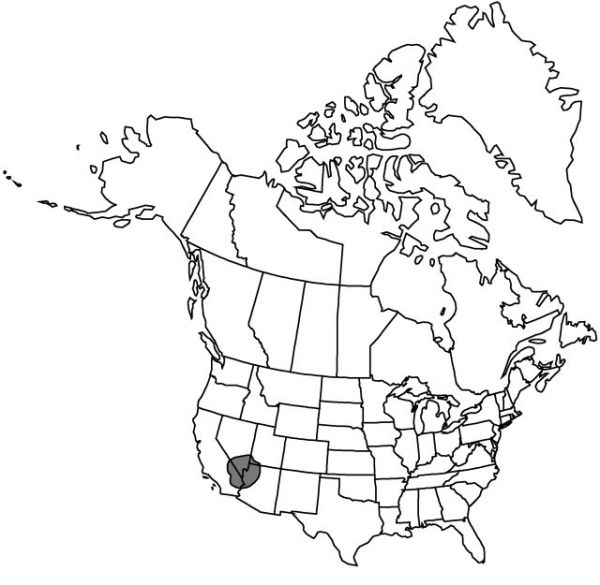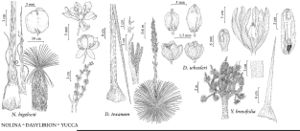Difference between revisions of "Yucca brevifolia"
in S. Watson, Botany (Fortieth Parallel), 496. 1871.
FNA>Volume Importer |
FNA>Volume Importer |
(No difference)
| |
Revision as of 19:34, 24 September 2019
Plants usually solitary, erect, arborescent, to 15 m. Stems usually 1, occasionally several–many, simple or usually branched distally; branches 1–3 m. Leaf blade green, 15–35 × 0.7–1.5 cm, rigid, smooth, glabrous, margins nearly entire, minutely denticulate, yellow. Inflorescences erect, paniculate, densely crowded, ca. 1/2 enclosed in rosettes, ellipsoid-ovoid, 3–5.5 × 3–3.8 dm, glabrous. Flowers erect, 4–7 cm; perianth oblong-ellipsoid to globose; tepals barely connate at base, greenish white to cream, lanceolate to oblong, 2.5–7 × 1.1–2.2 cm; filaments 1–1.2 cm; anthers 3–3.2 mm, short-pubescent to papillate; pistil 2–3.5 cm; ovary ovoid, 2.5–3 cm, longer than broad; style ca. 1.6 mm; stigmas distinct. Fruits pendent, capsular, indehiscent, deeply furrowed, ellipsoid, 6–8.5 cm, dry, spongy. Seeds dull black, thin, 8–12 mm diam., smooth.
Phenology: Flowering late winter–mid spring.
Habitat: Deserts
Elevation: 400–1800 m
Distribution

Ariz., Calif., Nev., Utah.
Discussion
There is disagreement regarding the status of entities within Yucca brevifolia. S. D. McKelvey (1935) described var. jaegeriana, the miniature Joshua tree, and L. D. Benson and R. A. Darrow (1981) recognized the variety as well; however, J. L. Reveal (1977c) declined to recognize it, a decision with which we agree.
Selected References
None.
